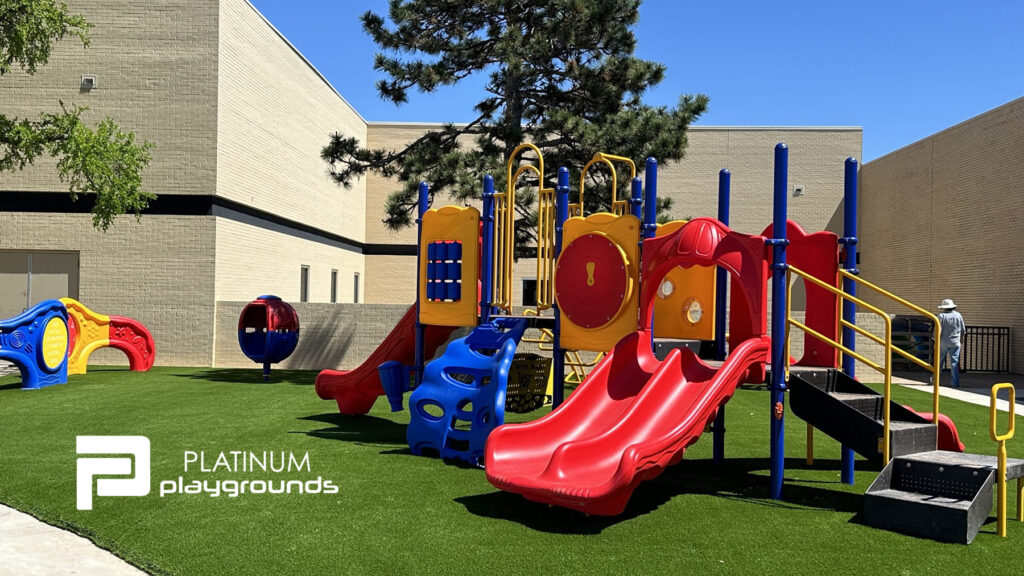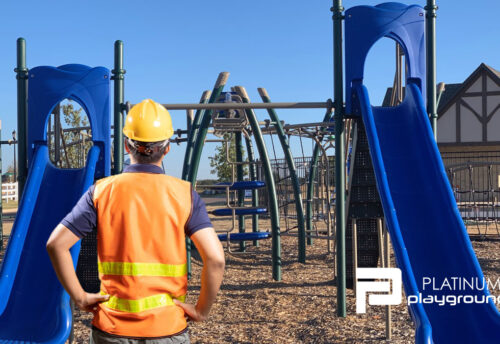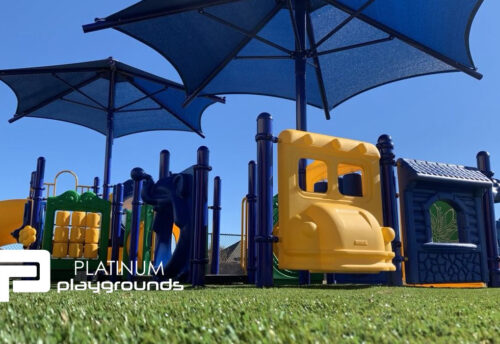How to Choose the Best School Playground Equipment
School Playgrounds are more than just a place for kids to burn off energy—they are essential for child development, fostering creativity, social skills, and physical health. For school administrators, choosing the best playground equipment for schools is a crucial decision that affects student safety, engagement, and long-term maintenance costs. With so many options available, how do you select the right structures, surfacing, and outdoor amenities to create a safe and enjoyable play space?

The key factors school decision-makers should consider when designing a playground include, age-appropriate equipment, ADA compliance, safety standards, and budget-friendly solutions.
Understanding Age-Appropriate School Playground Design
Not all playground equipment is suitable for every age group. Schools must ensure that their playgrounds cater to the developmental needs of their students. The National Program for Playground Safety (NPPS) recommends dividing playgrounds into distinct areas for different age groups:
- Toddlers (Ages 2-5): Low platforms, small slides, crawl tunnels, and interactive panels.
- Elementary (Ages 5-12): Taller slides, climbing structures, monkey bars, and adventure equipment.
Creating separate zones within the playground ensures that younger children have safe spaces to play while older kids enjoy more challenging activities.
Tip: Consider installing multi-use structures that offer different difficulty levels to accommodate a broad range of students!
Safety First: Meeting School Playground Safety Standards
Safety is the number one concern when selecting school playground equipment. Schools must comply with national safety regulations to minimize the risk of injuries. Key standards to follow include:
- Consumer Product Safety Commission (CPSC) Guidelines: Ensures playgrounds meet federal safety benchmarks.
- ASTM International Standards (ASTM F1487-17): Covers safety specifications for playground equipment.
- National Recreation and Park Association (NRPA) Guidelines: Recommends best practices for playground design and maintenance.
Common safety features to look for:
- Impact-absorbing safety surfacing (like poured-in-place rubber or engineered wood fiber)
- Rounded edges and no sharp corners
- Guardrails on elevated platforms
- Proper spacing to prevent entrapment hazards
Schools should also schedule regular maintenance inspections to ensure equipment remains in good condition.
Other safety considerations: Playground Safety Standards Schools Need to Know Before Buying Equipment
Prioritizing ADA-Compliant School Playgrounds
Inclusivity is a key factor when designing a playground. The Americans with Disabilities Act (ADA) requires public school playgrounds to be accessible to children of all abilities. Here’s what to consider:
- Accessible Routes: Ensure pathways to play areas are wide, smooth, and free of obstructions.
- Adaptive Play Structures: Include ramps, transfer platforms, and sensory play panels for children with mobility challenges.
- Ground-Level Play Options: Interactive stations, musical panels, and spinning elements cater to all abilities.
Investing in ADA-compliant playgrounds fosters inclusivity and ensures that all students can participate in play.
Did you know? Schools that prioritize ADA compliance may qualify for additional grants and funding!
Choosing Durable, Low-Maintenance Equipment
Playgrounds are a long-term investment, and schools need equipment that can withstand heavy use and harsh weather conditions. When selecting materials, consider:
- Powder-coated steel: Resistant to rust and corrosion.
- High-density polyethylene (HDPE): UV-resistant and splinter-free.
- Recycled plastic: Eco-friendly and durable.
Routine maintenance should include checking bolts, inspecting surfacing, and repairing minor wear and tear before it becomes a costly issue.
Maximizing Budget with Cost-Effective Solutions
Many schools operate under tight budgets but still want high-quality playgrounds. Some cost-effective strategies include:
- Phased Installations: Build in stages, prioritizing must-have structures first.
- Grant Funding: Apply for playground grants from local, state, and federal programs.
- Corporate Sponsorships: Partner with local businesses for funding.
- Swapping Materials: Opt for durable yet affordable alternatives like composite materials over wood.
Modular playground equipment allows for future expansion as funding becomes available.
Related: How Schools Can Afford High-Quality Playground Equipment on a Budget
Enhancing Play Spaces with Outdoor Amenities
A playground isn’t just about slides and swings—adding shade structures, seating areas, and sports courts can elevate the space. Consider including:
- Shade structures: Protects kids from sun exposure.
- Benches and picnic tables: Creates a space for teachers and parents to supervise comfortably.
- Waste receptacles: Promotes cleanliness and reduces litter.
- Sports courts: Adds options for structured physical activities like basketball and soccer.
Let Platinum Playgrounds Help You Build the Perfect School Playground
Selecting the best playground equipment for schools doesn’t have to be overwhelming. By focusing on safety, inclusivity, durability, and budget, you can create a vibrant play space that supports student growth and development.
At Platinum Playgrounds, we specialize in custom playground solutions for schools. Our team helps you design, install, and maintain commercial playgrounds that align with your school’s needs and budget. Plus, we offer a wide range of ADA-compliant, eco-friendly, and long-lasting playground equipment.
Ready to bring your dream playground to life? Contact Platinum Playgrounds today for a free consultation!


